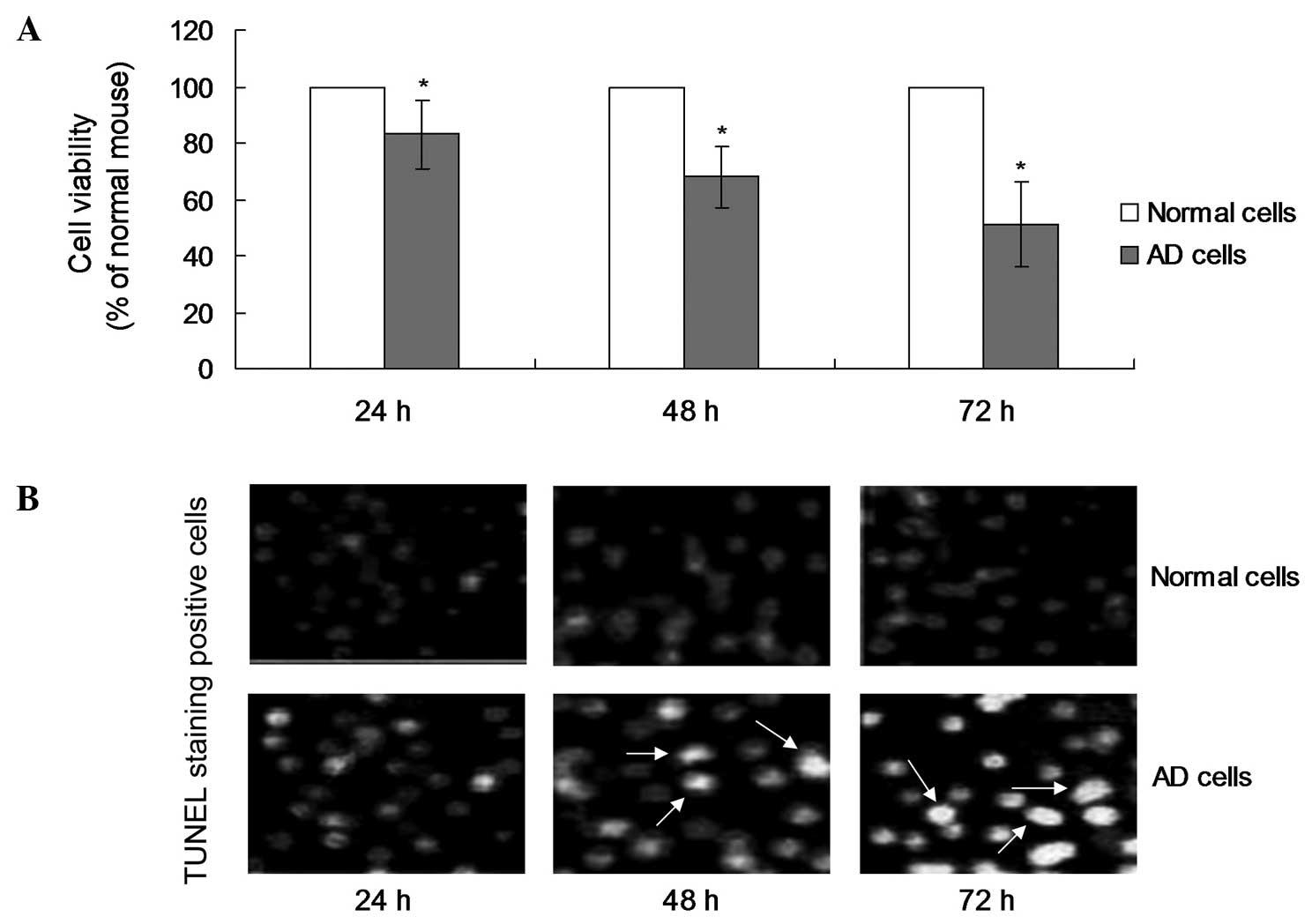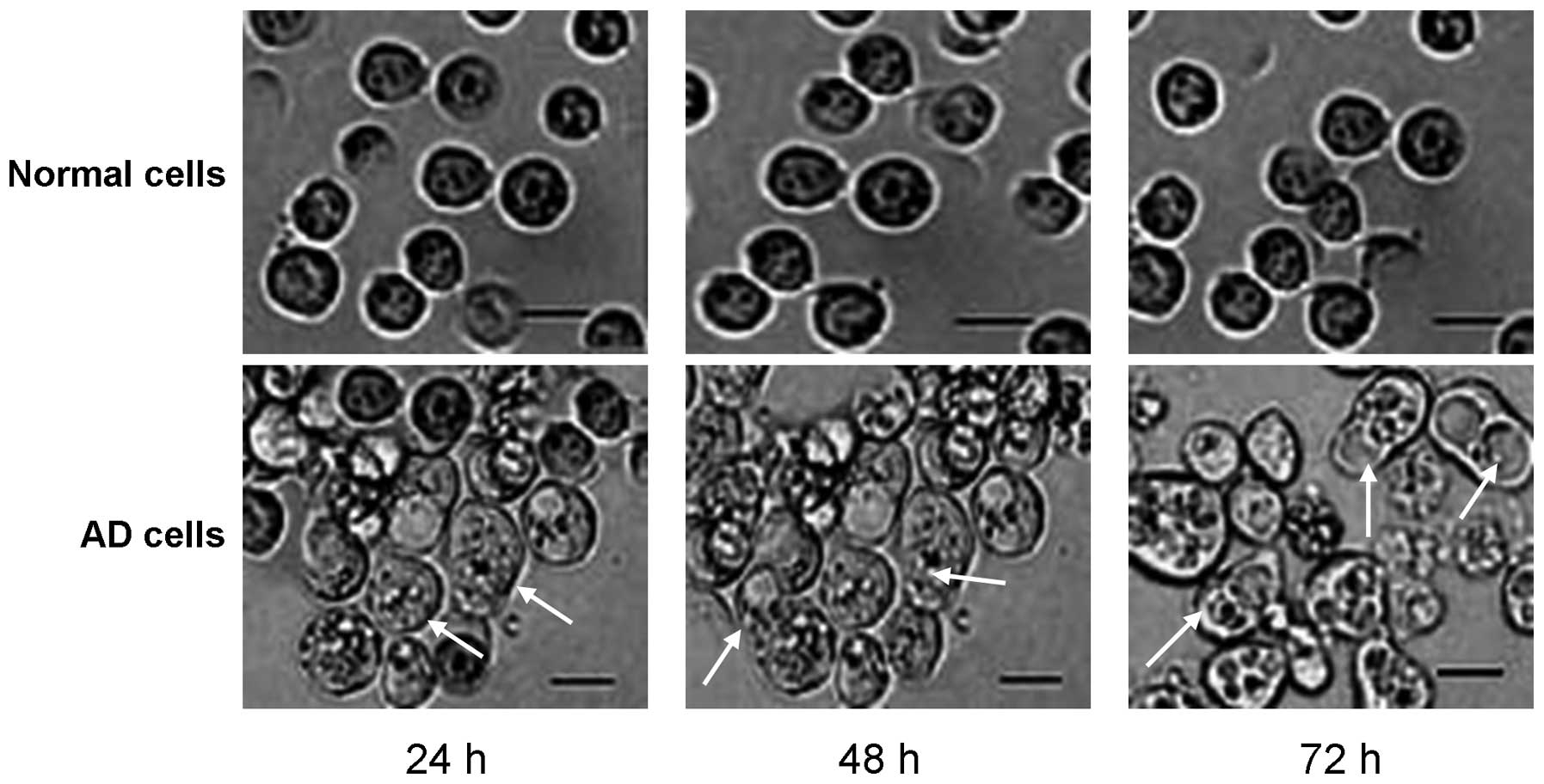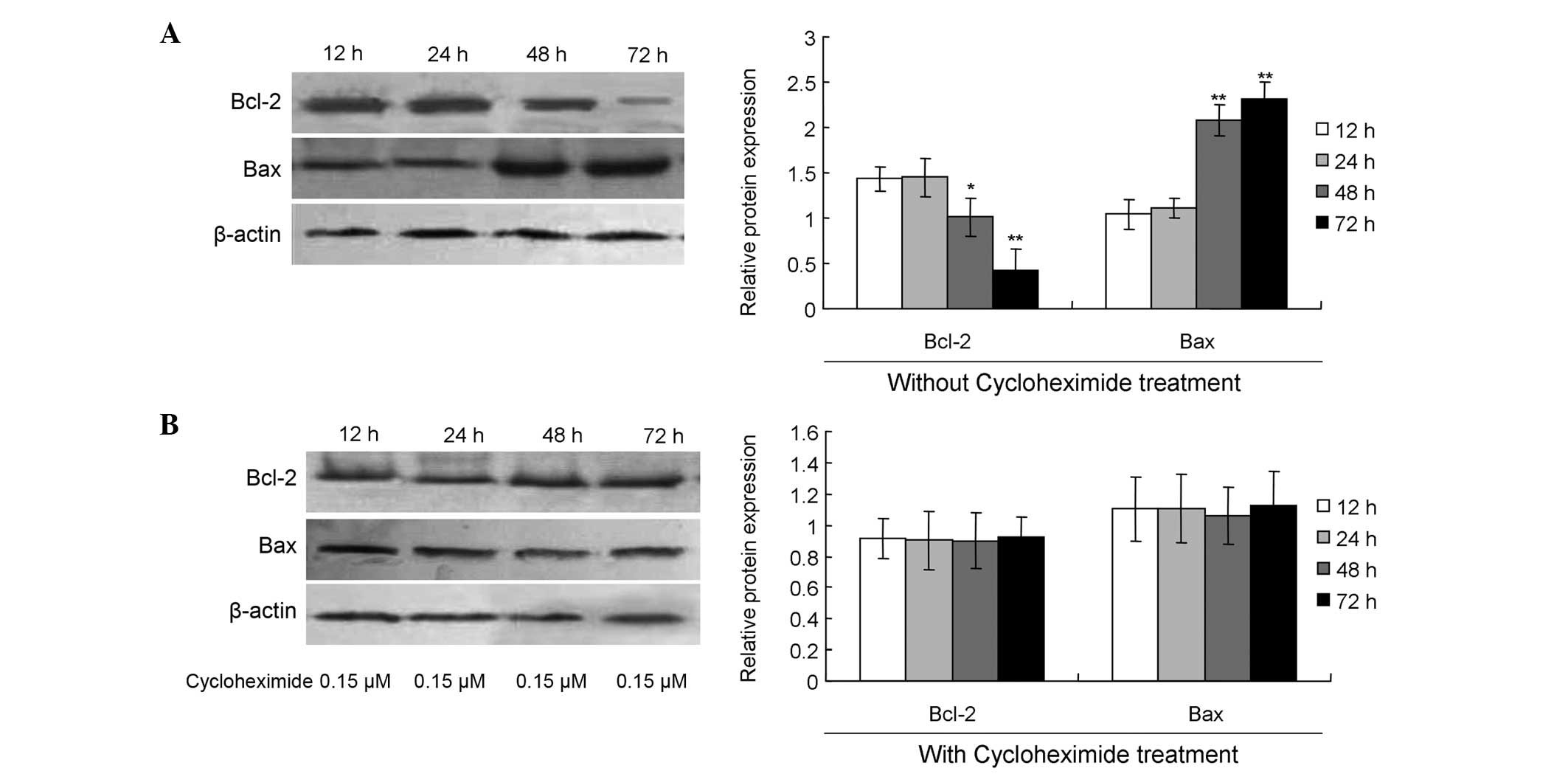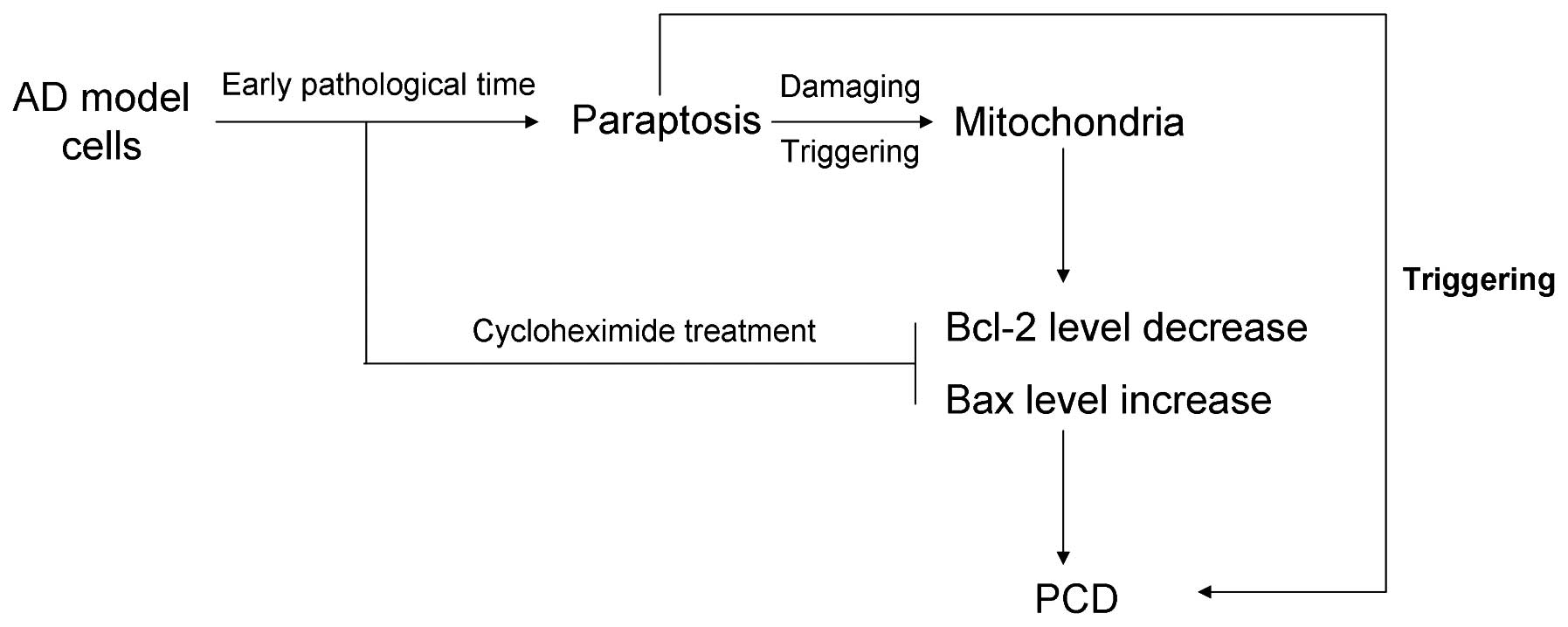|
1
|
Zhu Y, Li C, Sun A, Wang Y and Zhou S:
Quantification of microRNA-210 in the cerebrospinal fluid and
serum: Implications for Alzheimer's disease. Exp Ther Med.
9:1013–1017. 2015.PubMed/NCBI
|
|
2
|
Chambers JK, Uchida K, Harada T, Tsuboi M,
Sato M, Kubo M, Kawaguchi H, Miyoshi N, Tsujimoto H and Nakayama H:
Neurofibrillary tangles and the deposition of a beta amyloid
peptide with a novel-N-terminal epitope in the brains of wild
Tsushima leopard cats. PLoS One. 7:e464522012. View Article : Google Scholar : PubMed/NCBI
|
|
3
|
Guo J, Chang L, Zhang X, Pei S, Yu M and
Gao J: Ginsenoside compound K promotes β-amyloid peptide clearance
in primary astrocytes via autophagy enhancement. Exp Ther Med.
8:1271–1274. 2014.PubMed/NCBI
|
|
4
|
Yu WH, Kumar A, Peterhoff C, Shapiro
Kulnane L, Uchiyama Y, Lamb BT, Cuervo AM and Nixon RA: Autophagic
vacuoles are enriched in amyloid precursor protein-secretase
activities: Implications for beta-amyloid peptide over-production
and localization in Alzheimer's disease. Int J Biochem Cell Biol.
36:2531–2540. 2004. View Article : Google Scholar : PubMed/NCBI
|
|
5
|
Sosna J, Voigt S, Mathieu S, Lange A, Thon
L, Davania P, Herdegen T, Linkermann A, Rittger A, Chan FK,
Kabelitz D, et al: TNF-induced necroptosis and PARP-1 mediated
necrosis represent distinct routes to programmed necrotic cell
death. Cell Mol Life Sci. 71:331–348. 2014. View Article : Google Scholar : PubMed/NCBI
|
|
6
|
Karl R, Singha PK, Venkatachalam MA and
Saikumar P: A novel role for MAPI LC3 in nonautophagic cytoplasmic
vacuolation death of cancer cells. Oncogene. 28:2556–2568. 2009.
View Article : Google Scholar : PubMed/NCBI
|
|
7
|
Wang Y, Yang Z and Zhao X: Honokiol
induces paraptosis and apoptosis and exhibits schedule-dependent
synergy in combination with imatinib in human leukemia cells.
Toxico Mech Methods. 20:234–241. 2010. View Article : Google Scholar
|
|
8
|
Degterev A, Huang Z, Boyce M, Li Y, Jagtap
P, Mizushima N, Cuny GD, Mitchison TJ, Moskowitz MA and Yuan J:
Chemical inhibitor of nonapoptotic cell death with therapeutic
potential for ischemic brain injury. Nat Chem Biol. 1:112–119.
2005. View Article : Google Scholar : PubMed/NCBI
|
|
9
|
Kroemer G, El-Deiry WS, Golstein P, Peter
ME, Vaux D, Vandenabeele P, Zhivotovsky B, Blagosklonny MV, Malorni
W, Knight RA, Piacentini M, et al: Glassification of cell death:
Recommendations of the nomenclature committee on cell death. Cell
Death Differ. 12:1463–1467. 2005. View Article : Google Scholar : PubMed/NCBI
|
|
10
|
Majno G and Joris I: Apoptosis, oncosis
and necrosis: An overview of cell death. Am J Pathol. 146:3–15.
1995.PubMed/NCBI
|
|
11
|
Trump BF, Berezesky IK, Chang SH and
Phelps PC: The pathways of cell death: Oncosis, apoptosis and
necrosis. Toxicol Pathol. 25:82–88. 1997. View Article : Google Scholar : PubMed/NCBI
|
|
12
|
Wang Y, Xu K, Zhang H, Zhao J, Zhu X, Wang
Y and Wu R: Retinal ganglion cell death is triggered by paraptosis
via reactive oxygen species production: A brief literature review
presenting a novel hypothesis in glaucoma pathology. Mol Med Rep.
10:1179–1183. 2014.PubMed/NCBI
|
|
13
|
Wang J, Xie Y, Feng Y, Zhang L, Huang X,
Shen X and Luo X: (–)-Epigallocatechingallate induces apoptosis in
B lymphoma cells via caspase-dependent pathway and Bcl-2 family
protein modulation. Int J Oncol. 46:1507–1515. 2015.PubMed/NCBI
|
|
14
|
Ma L and Li W: Emodin inhibits LOVO
colorectal cancer cell proliferation via the regulation of the
Bcl-2/Bax ratio and cytochrome c. Exp Ther Med. 8:1225–1228.
2014.PubMed/NCBI
|
|
15
|
Yan Y, Gong K, Ma T, Zhang L, Zhao N,
Zhang X, Tang P and Gong Y: Protective effect of edaravone against
Alzheimer's disease - relevant insults in neuroblastoma N2a.
Neurosci Lett. 531:160–165. 2012. View Article : Google Scholar : PubMed/NCBI
|
|
16
|
Kim JH: Brain-derived neurotrophic factor
exerts neuroprotective actions against amyloid beta-induced
apoptosis in neuroblastoma cells. Exp Ther Med. 8:1891–1895.
2014.PubMed/NCBI
|
|
17
|
Oakes SA, Scorrano L, Opferman JT, Bassik
MC, Nishino M, Pozzan T and Korsmeyer SJ: Proapoptotic Bax and BAK
regulate the type 1 inositol trisphosphate receptor and calcium
leak from the endoplasmic reticulum. Proc Natl Acad Sci USA.
102:105–110. 2005. View Article : Google Scholar : PubMed/NCBI
|
|
18
|
Kim SH, Shin HY, Kim YS, Kang JG, Kim CS,
Ihm SH, Choi MG, Yoo HJ and Lee SJ: Tunicamycin induces paraptosis
potentiated by inhibition of BRAFV600E in FRO anaplastic thyroid
carcinoma cells. Anticancer Res. 34:4857–4868. 2014.PubMed/NCBI
|


















